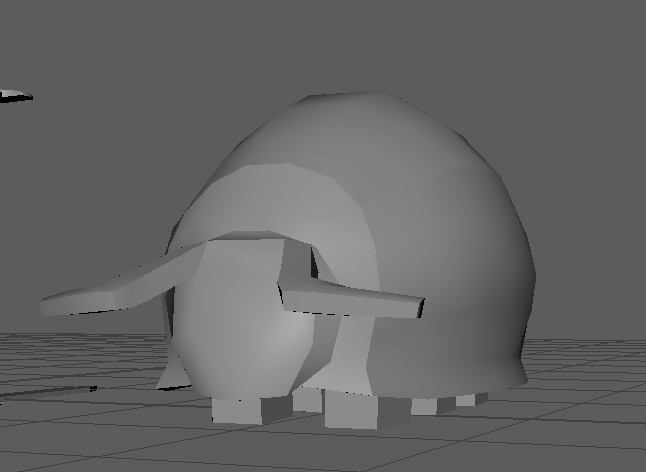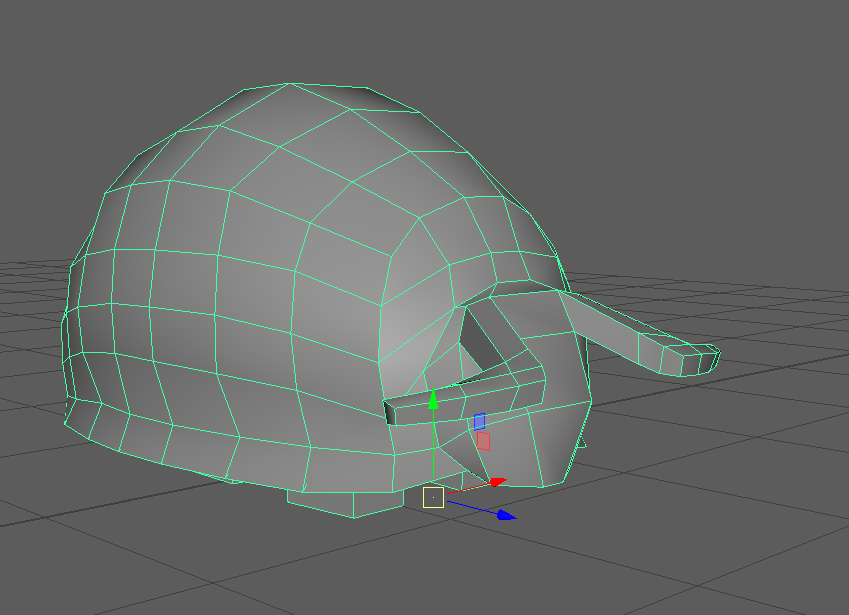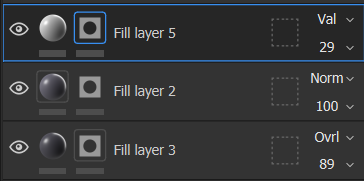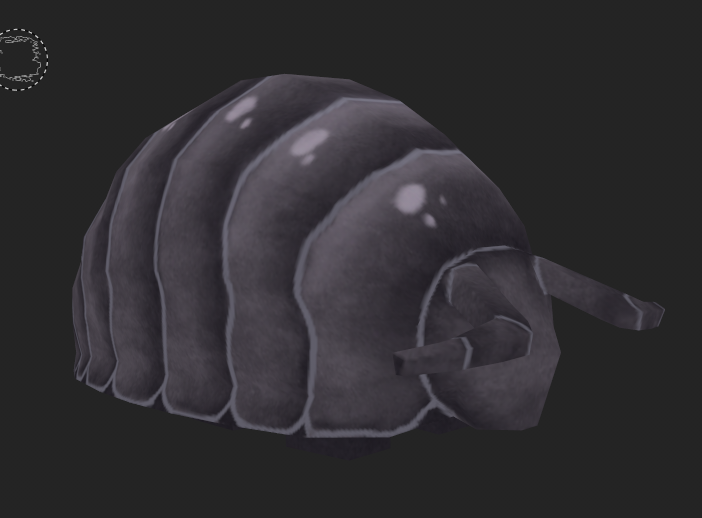Bugs!

I know what you're thinking; not those kinds of bugs! For this Devlog, I'm going to be talking about actual bugs—pillbugs to be exact! If you grew up in the US, you have probably encountered these guys before. They're quite small in the real world, so instead of keeping them as tiny little guys, they're going to be about as big as the human models themselves when you encounter them in-game. It's a fantasy world, after all!
While I'm relatively new to character modeling for games, I much prefer crafting animals and other little critters compared to humans. The anatomy varies greatly from creature to creature, so sometimes you have to get creative with how you choose to go about it, whether it be stylizing and making some shapes dramatic, or sticking as close as possible to your references. In the case of our pillbug friend, I chose to greatly reduce the number of legs down to six, both from a style point of view and for the sake of keeping him pretty low poly.
As with just about everything I model in Maya, he started as a cube with just a few divisions on each side. The bulk of his body was done just by pulling vertices and faces to create a more rounded shape, and the head was a single side of the cube slightly extruded and shaped again. After about an hour of small adjustments, a bug-shaped friend was born. This was my first time making any sort of isopod or insect-like animal, so I was pretty satisfied with his look.

Problem was, he didn't quite look like a pillbug just yet. That's where the painting fun starts. When I work in Substance Painter, I have a slightly different workflow from my usual art methods, as the program's settings and menus are set up very differently and admittedly lacking some tools I tend to use traditionally. The trick of it? Fill layers—and LOTS of them. I'm not the most organized person when I'm working quickly in a program, but using fill layers with black masks are a wonderful combination. You can paint anything on the black mask layer itself, and there's no cause for concern if the colors end up looking off the longer you work on a layer; you can simply go back to the fill part of the layer and adjust it. White masks are essentially the same, but you'll be working backwards: erasing the layer in strokes rather than painting it. It all comes down to preference.

Since our bug friend is low poly, I opted for not adding more divisions toward the edges of his body for the sake of keeping his geometry from getting too complex, but isopods all have body segments; they're not smooth like the model. In order to simulate this, I hand painted the segments onto the curve of the body, filling in beside my segment lines with a darker smudge color for a little bit of shading. Toward the lower sides, I filled in the same dark color between drawn segments; while the model itself lacks the edges, the contrast causes the viewer's eye to follow the lighter colors first, which means the places where the model doesn't match aren't as easily noticeable in the game itself.

For the most part, the rest of the painting is just cleaning up small details and fixing brush strokes that may have been too heavy initially. It took me about 40-50 minutes to paint him completely, though it was largely due to a lot of color adjustments on my end. Pillbugs come in a lot more colors than I think I fully realized!
And now we have a fully colored isopod friend for the game!

Get Outset
Outset
| Status | Released |
| Authors | nrposey14, jamesNada, zhwilson, Landen Spencer, Ethan Spata |
| Genre | Adventure |
| Tags | Retro, Singleplayer |
More posts
- Bug HuntingJul 28, 2024
- Now Make it Look Like a PersonJul 22, 2024
- Trim SheetsJul 16, 2024
- The Sounds of the WorldJul 08, 2024
- Props Everywhere!Jul 01, 2024
- Modular AssetsJun 17, 2024
- The Quest ManagerJun 10, 2024
- Simple Player ControllerJun 02, 2024
Leave a comment
Log in with itch.io to leave a comment.